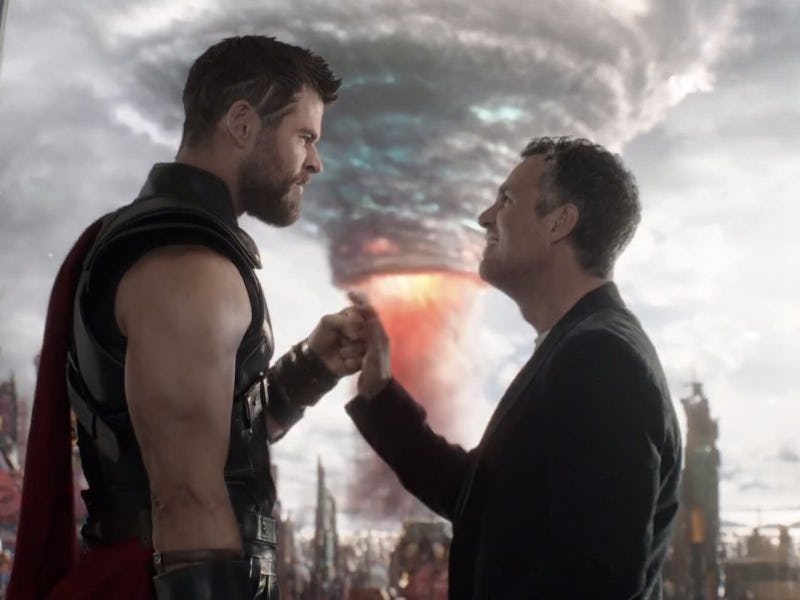'Thor: Ragnarok’ Ending: Here’s How It Compares to the Comics

The Norse apocalypse, known as “Ragnarok,” is a prophecy about the endless cycle of life and death and how complete destruction paves the way for a renewed future. That’s how it is in the “real” Ragnarok, and in Marvel comics, but in Taika Waititi’s Thor: Ragnarok, the apocalypse is a destructive punchline you can fly away from. The film draws inspiration from comics, but ultimately deviates quite a bit so the story can still fit with Avengers: Infinity War.
Spoilers follow for Thor: Ragnarok.
Ironically, after spending much of the movie trying to prevent Ragnarok, Thor’s the one to encourage it in the ned. That’s right: The titular Ragnarok comes to pass in the MCU, and it happens because Thor and the rest of the “Revengers” purposefully cause it, empowering Surtur with the Eternal Flame so he can defeat Hela but also destroy Asgard in the process.
With a massive spaceship, Thor takes the Asgardian survivors and a few gladiator companions from Sakaar into space with plans to settle on Earth. The whole thing is totally crazy and bonkers, turning an opulent race of gods into spacefaring nomads — but it’s much less grim than what happens in the comics.
Thor gouges his own eyes out, seeking the wisdom of Odin.
The latest “Ragnarok” storyline in Marvel comics came in 2004 to Thor, and it was written by Michael Avon Oeming and Andrea Di Vito.
The arc of the comics will sound familiar if you’ve seen Taika Waititi’s movie: Conflict erupts in Asgard between different factions, lots of Asgardians die, and Thor hits the reset button by triggering Ragnarok through Surtur. There’s plenty of undead soldiers and even a giant wolf, but the way these things influence the story is vastly different.
In the comics Ragnarok, each of the “Nine Realms” is destroyed except Midgard, aka Earth. All of the Asgardians die, even Loki, Heimdall, Odin, and Thor. The God of Thunder didn’t return to comics until 2007 for a new solo series, and spent all that time in what we can consider an “Odinsleep” — or “Thorsleep”?
Everybody dies and everything gets destroyed, but with it being comics, all that gets undone after a few short years. Don’t let that discredit how brutal the “Ragnarok” story was.
Somebody really should lend her a hand.
In the comics, it’s the God of Mischief that causes the intense and violent war leading to Ragnarok itself. Loki himself kills a ton of people or otherwise causes their deaths in brutal ways. Lady Sif even loses an arm at one point. So Thor and Loki’s amicable reunion in the film version presents a drastic departure from what happened in the comics.
There’s no Doctor Strange and definitely no Hulk, but there’s a giant snake that Thor has to fight which is pretty cool.
“Ragnarok” in the comics also occurred during a broader “Avengers Disassembled” storyline in Marvel, which gradually broke up the team and even killed off some members. Much like Ragnarok, “Avengers Disassembled” paved the way for chaos, destruction, and an eventual revitalization for Marvel’s stories.
Because Thor: Ragnarok had to fit within the larger MCU and lead directly into Avengers: Infinity war, they couldn’t exactly pull off something as severe and bold as what happened in the comics. But maybe that’s a good thing because Taika Waititi’s Thor: Ragnarok is one of the most fun Marvel outings yet.
Thor: Ragnarok is currently in theaters.